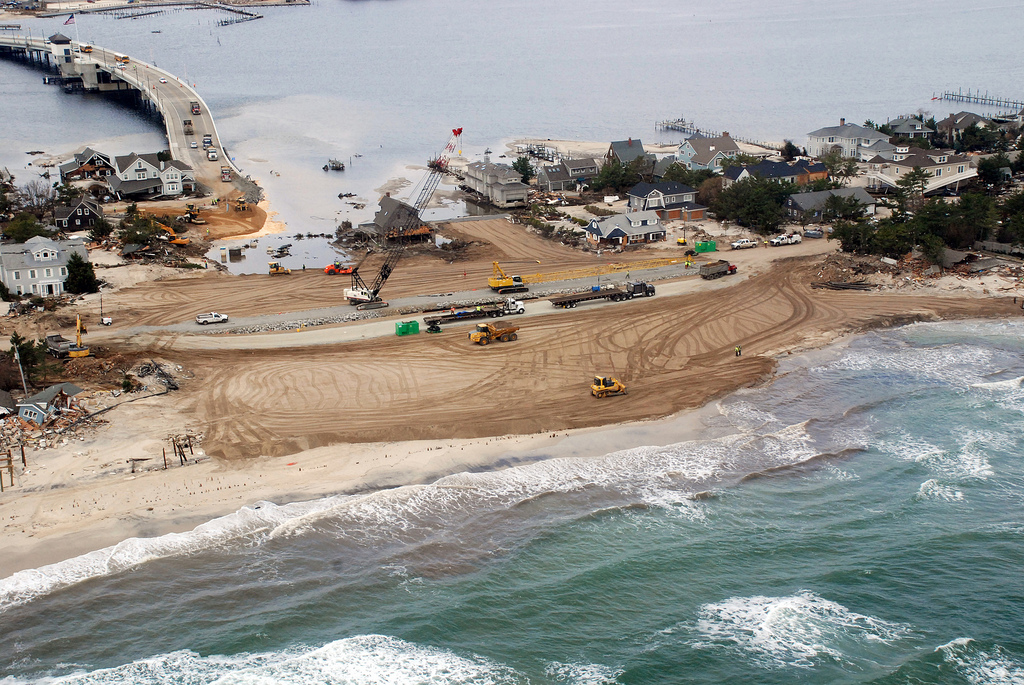Home Improvement
You Can’t Reason With Hurricane Season: 5 Ways to Prepare for Summer Storms

The images are startling. Homes leveled by destructive winds and raging seas. Major landmarks under several feet of water or washed into the ocean. Emergency shelters packed with displaced citizens who have nothing to do but wait until the storm passes and they receive word on whether their home has survived the onslaught, or whether they have a long and painful rebuilding process ahead.
While nothing can stop a major hurricane from bearing down on populated areas and causing mass destruction, how people who live in storm-vulnerable areas prepare for weather events can make a big difference in how much damage their homes and belongings sustain, and more importantly, how comfortably and safely they survive the storm. Without an emergency plan, a stocked emergency kit and important items like satellite phones, a hurricane warning could signal chaos and fear.

Atlantic hurricane season runs from early May through October each year, with the vast majority of powerful storms forming during the months of August and September. However, hurricanes can happen any time — 2012’s Superstorm Sandy occurred at the very end of hurricane season — meaning that it’s important to prepare for a storm well before the official start of the season.
Step One: Make an Escape Plan
According to the National Weather Service, preparation is the key to safely surviving extreme weather. This means that if you live in a storm-vulnerable region, you need a comprehensive plan of action when a storm is in the forecast. Most coastal communities have hurricane evacuation routes; learn the one closest to you so you can easily get out of town. If there is only one route out of town, over a bridge, for example, make it a priority to evacuate as soon as possible, before officials make evacuation mandatory. If you wait too long, the evacuation route is sure to be overcrowded with everyone else trying to leave at the same time. Know where you will go when a storm hits, such as a shelter, friend or relative’s home or a hotel, and how to get there.
Step Two: Establish Communication
During an emergency, communication is of utmost importance. Not only will you need to communicate with people outside of the parameters of the storm, such as concerned relatives, but you may need to contact emergency personnel. Make a written communication plan for all members of the family to follow so that everyone knows the whereabouts of the family at all times. Since major storms generally disrupt communications, consider renting a satellite phone for the duration of hurricane season to keep in your emergency kit. Renting a satellite phone, even for several months, is less expensive than buying, and will allow you to stay in touch even when cellular or landline communications are disrupted.
Step Three: Pack an Emergency Kit
Whether you opt to ride out the storm at home or you have to evacuate to a shelter or hotel, you’ll need basic supplies to stay safe and healthy while utilities are restored and the damage is cleaned up. At the beginning of hurricane season, prepare an emergency kit with enough fresh water and non-perishable food to last a week; plan on one gallon per person for every three days. Pack toiletries, diapers and wipes if needed, extra blankets and a few changes of clothes, batteries, flashlights and candles. Your emergency kit should also include cash — you may not be able to use credit cards or an ATM — and copies of important papers, like insurance policies.
Step Four: Check on Your Insurance
The weeks before hurricane season are the ideal time to make an appointment to review your insurance coverage. Confirm that your home is covered for hurricane damage and that you have adequate flood protection, as that’s often not included in standard policies. Find out the process for making claims, and be sure that you have all of the appropriate apps installed on your smartphone and your carrier’s contact information so you can file claims as soon as possible.
Step Five: Prepare to Batten Down the Hatches
Preventing storm damage requires physically securing your home and belongings. Take an inventory of your supplies, such as plywood boards, ropes and tape, before hurricane season to ensure that you’ll have what you need when the time comes. Also, evaluate your home and yard for any risks. For example, is that tree branch perilously close to the house or power lines? Hire a tree service to take care of it before it’s too late.
They say that an ounce of prevention is worth a pound of cure, and nowhere is that more true than in storm preparation.
Image from Flickr’s Creative Commons
About the Author: Kathy Szaba has a degree in emergency services and works with insurance companies, community service agencies and other groups to develop emergency skills and plans. She recommends satellite phone rentals; you can learn more about this affordable provider at globalcomsatphone.com.
-

 Tech11 years ago
Tech11 years agoCreating An e-Commerce Website
-

 Tech11 years ago
Tech11 years agoDesign Template Guidelines For Mobile Apps
-

 Business6 years ago
Business6 years agoWhat Is AdsSupply? A Comprehensive Review
-

 Business10 years ago
Business10 years agoThe Key Types Of Brochure Printing Services
-

 Tech8 years ago
Tech8 years agoWhen To Send Your Bulk Messages?
-

 Tech5 years ago
Tech5 years ago5 Link Building Strategies You Can Apply For Local SEO
-

 Law5 years ago
Law5 years agoHow Can A Divorce Lawyer Help You Get Through Divorce?
-

 Home Improvement6 years ago
Home Improvement6 years agoHоw tо Kеер Antѕ Out оf Yоur Kitсhеn































